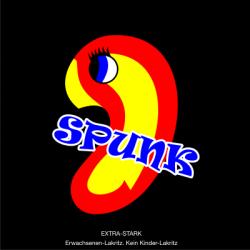“You know what I think should be done about Flateyri? Nothing. Nothing at all. Not even a kilo of quota should go their way. No last-minute operations to glaze over the grim facts-of-the- matter, no patch on the gaping wound. Nothing.”
Sitting in the now-abolished smoking section of Ísafjörður pub/café Langi Mangi my companion, a journalist for local newspaper BB, lit a cigarette, chugged the last of his beer and finished his sentiment. “It’s time people get confronted with the harsh reality of this system. Head on. It is doing exactly what it was designed for; this is how it works, this is what it amounts to and this is what they voted for, continually. So let them enjoy it!”
What should be done about Flateyri indeed? Mere days after the parliamentary elections, word got out that the proprietors of Flateyri’s biggest employer (“sole employer” is hardly an overstatement), fishery Kambur, were liquidating the business. 120 townspeople, nearly half the population, stand to lose their jobs this fall. Their given reasons: inflation, the resulting strength of the Króna against foreign currencies and the high cost of renting quota (the highly debated Icelandic fishing regulatory system deserves many lengthy essays. It is quota based, and a few large fisheries now possess a huge portion of the allotted quota. Smaller businesses and independent operators need to rent theirs at a considerable price). Kambur’s owners will of course walk away with considerable sums of money. That’s business.
Regular readers of the Grapevine may remember learning about Flateyri in issue 12 of last year, in an article entitled Flateyri and the Fate of Small Town Iceland. It mainly dealt with the town’s continually diminishing size, its one-horse economy and the fact that an estimated third of it’s population of 300 (down from 500 in its heyday) is comprised of immigrants and immigrant-workers from Poland and the Philippines who sometimes have trouble fully adapting and participating in local culture. It portrayed a still proud small-town, struggling to find its legs in modernity following a series of setbacks.
One of the people I interviewed for said article was Halldór Halldórsson, mayor of Ísafjarðarbær, the coalition municipality that unites Flateyri with several (closely) neighbouring towns. While he agreed that Flateyri had its fair share of problems, he expressed optimism for its future. “There’s plenty of jobs to be had,” he told me, “even though we need to import labour to operate the business [Kambur’s workforce is 90% immigrant]. Kambur is doing extremely well. The company had a record-year last year [2005], processing a full 8.000 tons of products.”
So much for record-years.
So much for jobs to be had.
Luckily, God (or the Icelandic government) rarely closes a door without opening some windows. And behold! The viability of establishing a large-scale oil refinery in the vicinity of Flateyri is already being researched and seriously discussed. It would provide the people of the northern Westfjords with 5-600 additional jobs. And they need them, as it is evident that the fishing industry on which these towns were originally founded has left the area for good, the region’s allotted quota quietly traded away by the robber barons that built (and later dismantled) their empires there. These are the Icelandic equivalents of Flint, Michigan. This is how the system works: it is doing exactly what it was designed for.
Icelanders often speak of problems facing small communities such as Flateyri, problems shared by most if not all of the small towns lining the island’s shoreline, problems for which behemoth aluminium smelting plants (and now oil-refineries) are often our government’s proposed solution.
Here are some examples:
-Educated youngsters aren’t returning to the communities that fostered them. This is sometimes referred to as brain drain.
-Government jobs are severely unevenly distributed around the country. Save for a precious few, most of them are located in Reykjavík, even those positions founded during the last decade when it was evident that smaller towns would need the boost they could provide.
-Uniting with neighbouring towns (way of the future!) meant forfeiting certain modes of employment, such as common commerce and service jobs. As a result, available jobs are pointedly un-diverse.
-Most of the community is employed by a single company.
-A large part of that company’s workforce (at Kambur: 90%) is comprised of immigrants.
-Language-barriers and scarce educational resources often isolate said immigrant portion from the rest of the community, making it hard for them to fully integrate.
Surely, a dose of heavy industry will serve to solve these problems for good.
Buy subscriptions, t-shirts and more from our shop right here!
















